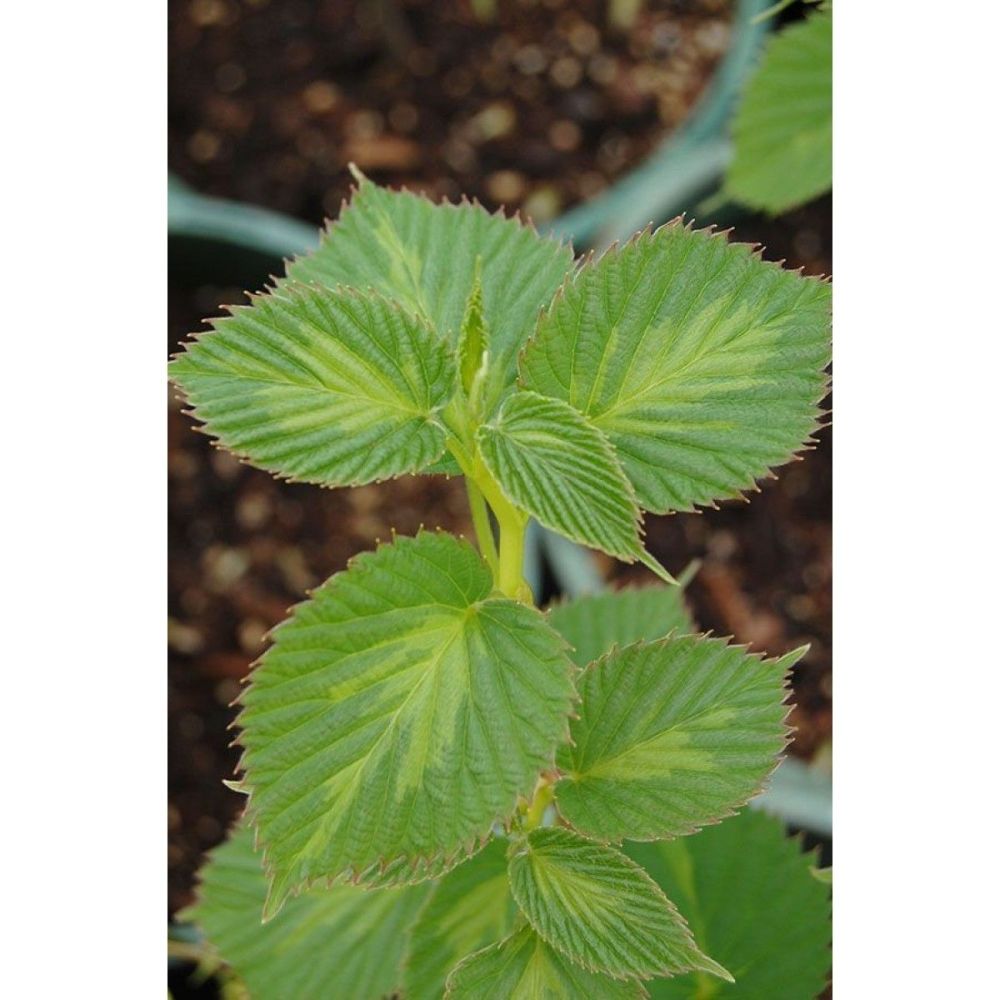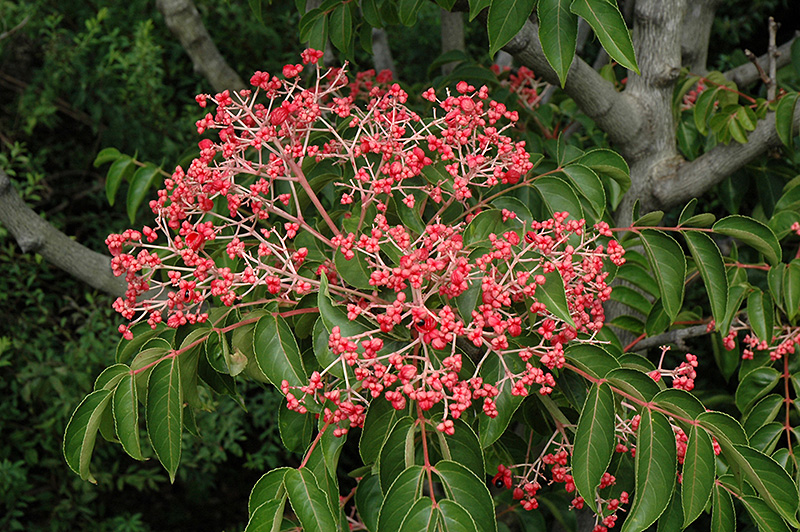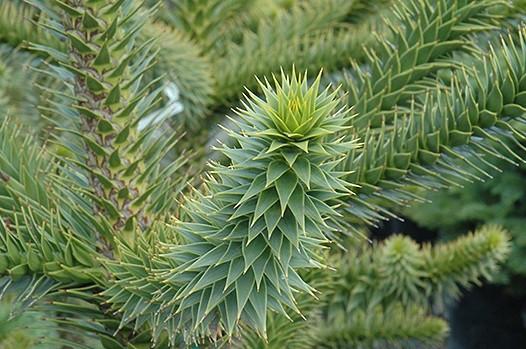Perusing a recently delivered catalog with many out of the ordinary plant offerings, I am tortured by the listing of a Dove tree with variegated foliage. Rarely do I curse my too frequent neglect and occasional loss of new acquisitions, but by sheer idiocy a young twig of a Dove tree (Davidia involucrata ‘Lady Sunshine’) was left outdoors several years ago in a pot on a patio through several days of below zero (Fahrenheit) temperatures. 
Predictably, the tree did not survive, and ever since I have scanned vendors to purchase another. Another, I must say, at a reasonable price, since I’ve seen others selling for over a hundred dollars, which is more than even a plant addict should be willing to pay for such a treasure. The recent sighting of a Dove tree (Davidia involucrata ‘Lady Dahlia’, above, with inferior variegation, but better than nothing) was more affordably priced, certainly not cheap for a tree that is likely to be twelve inches tall, but now I am more conflicted.
Two trees, a Japanese maple and a Chinese dogwood were lost in last year’s constant wetness, so two spots are available, preferably to be filled with something out of the ordinary, but a tree that doesn’t grow too tall or wide since both areas are somewhat limited. The Dove tree, or perhaps the Korean Sweetheart (Euscaphis japonica, above), are appropriately sized, and just odd enough. Why not another dogwood, or Japanese maple? Already there are thirty-some maples and maybe a dozen dogwoods in the garden, so I’d prefer something different, but the problem is that these will be tiny trees from the start, and for too many years.
I would be very tempted by a skinny five or six footer, even for a reasonably ridiculous price, but one or two feet tall is too small. This is a thirty year old garden, and I might not have enough years left to see the tree fill the space. Probably, I’ll look for other trees for the open spots, but in the spirit of purchasing plants whether there’s a suitable place for them or not, I’ll go ahead with buying the Dove and Sweetheart trees. But, this time I won’t make the mistake to leave them unprotected in the cold.
And while I’m being irresponsible, I’ve just found out that a small Monkey Puzzle (Araucaria araucana, above) will be available in the next few weeks. Again, one too small to fill one of the voids, and again, a tree that I’ve grown and killed years in the past. It is a certainty that the only tree with more vicious spines than Monkey Puzzle is a dead one. I’ll always remember digging out the dead tree, Even with gloves, multiple wounds were inflicted.
It would be best not to kill this one. I’m quite certain that the tree prefers a cooler, drier climate, but sometimes this can be worked around with a spot of dry ground and out of the afternoon sun. I have no idea where that’s going to be, but I’ve waited for too many years for another, and here it is. Without question, none of this is particularly logical, but so what?
Hi Dave..could you please write something about to mulch or not to mulch? I need 50 yards of mulch for my gardens (approx 1/8 of my 1.1 acres) and its getting rather expensive, approx. 800.00! That is spreading it myself. As I am not as thrilled about this project as I once was, I need alternatives! Thank you.
Good idea, thanks. I’ll get to work on this for later this week.
There is no such thing as a perfect tree. (DUH!) Dove tree is one of the least perfect there is. I grew a few back in the 1990s, and they really were weak. So many of our clients wanted them, and took the wimpiest of them that I was too embarrassed to sell. The main reason that I would not want to grow them is that I do not feel right about selling something so wimpy. Other growers in cooler climates can grow specimens of better quality.
I will never understand the allure of rare and exotic trees and plants. In most cases, they are rare because no one want them. Conversely, I get annoyed by those who think of themselves as horticultural professionals who plant mostly what is all to common (such as crepe myrtle and London plane) and toss out a few Japanese maples to make it seem like they care.
There are lots of trees that nobody else wants, and for good reason, that I want in my garden. Thus the Dove tree. I am constantly frustrated that landscape architects and design choose red maples, dogwoods, redbuds, Japanese maples, and crapemyrtles for clients, and nothing else. These are all fine trees for our area, but a little variety is good. In this area blackgum and yellowood are exceptional trees, but we sell a handful and hundreds of maples.
GADS! That is why I dislike Japanese maples so. No one understands, but I must work with so many that are not happy here. They so often get planted out in overly exposed areas just because the landscape designer likes them, or believes the he or she ‘should’ like them. Crape myrtles (which I often omit the ‘e’ in ‘crape’ from) are the WORST! Even though they are good trees for some applications, I just can not force myself to recommend them. I happen to like redbud because it is not overly common here, but I can not stand the ‘Forest Pansy’ because it is the ONLY redbud that anyone knows, and it doesn’t even look good in our climate. The name alone is a good enough reason to avoid it; LAME! Dang, sorry about the rant.